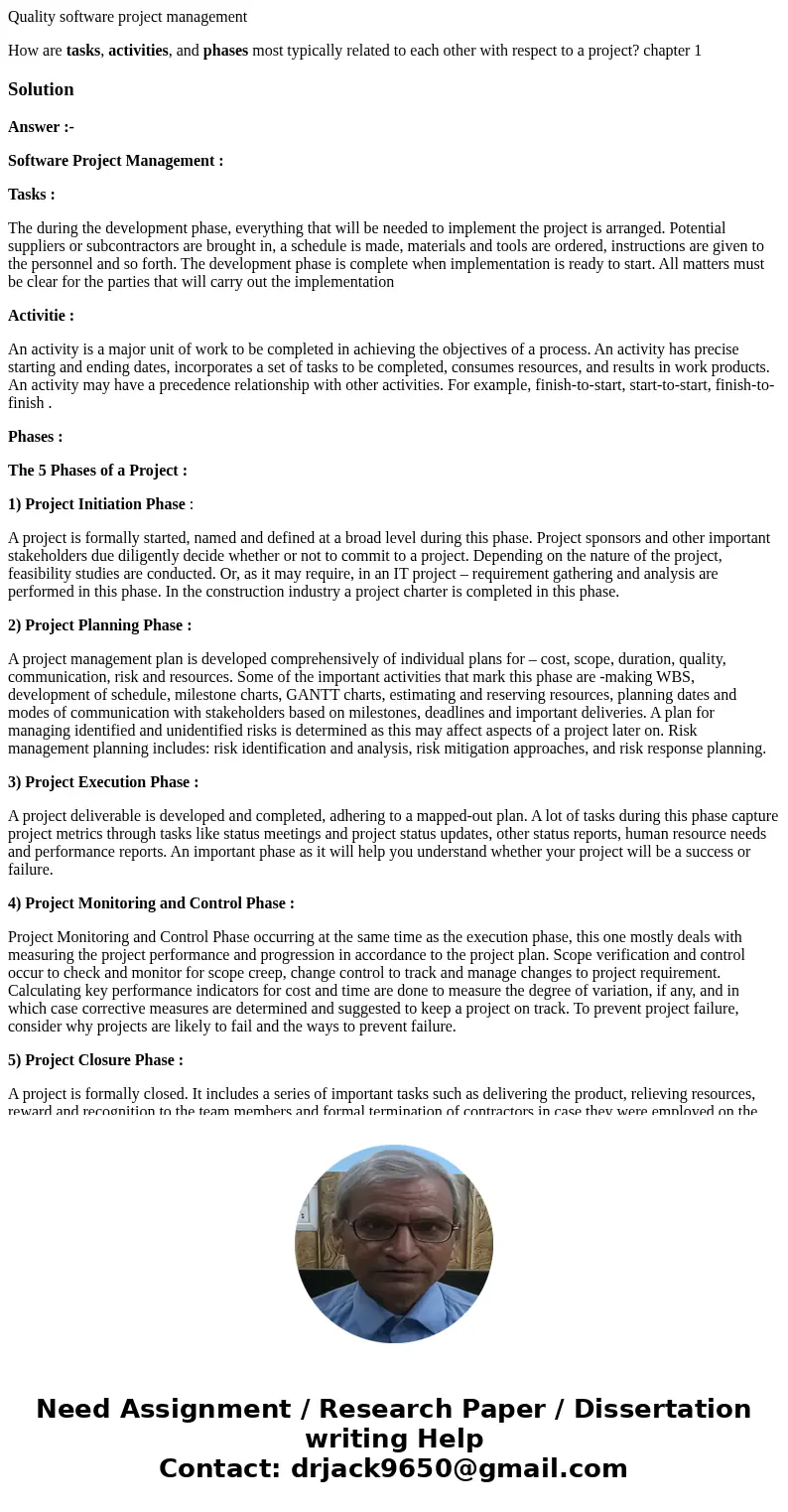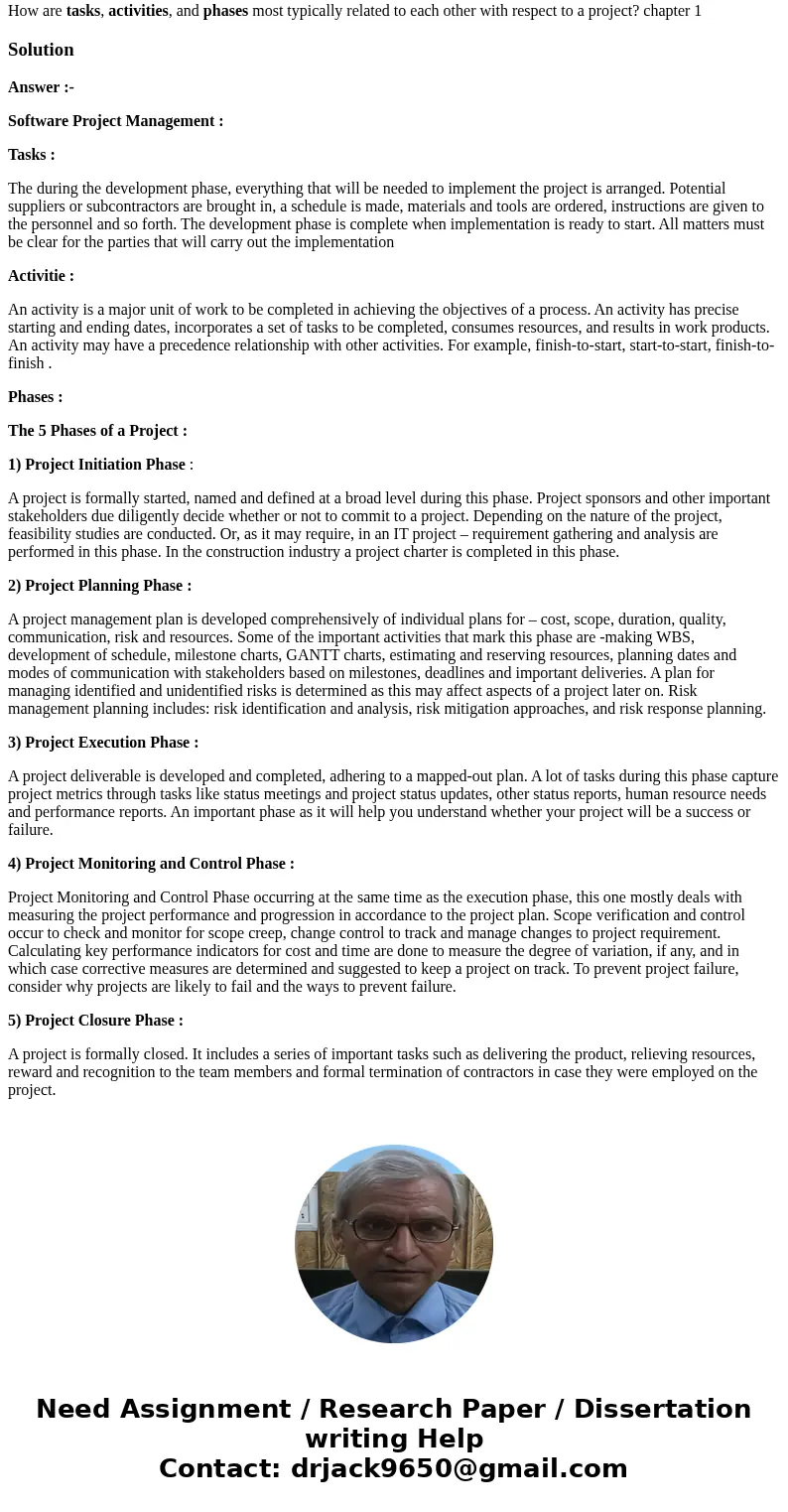Quality software project management How are tasks activities
Quality software project management
How are tasks, activities, and phases most typically related to each other with respect to a project? chapter 1
Solution
Answer :-
Software Project Management :
Tasks :
The during the development phase, everything that will be needed to implement the project is arranged. Potential suppliers or subcontractors are brought in, a schedule is made, materials and tools are ordered, instructions are given to the personnel and so forth. The development phase is complete when implementation is ready to start. All matters must be clear for the parties that will carry out the implementation
Activitie :
An activity is a major unit of work to be completed in achieving the objectives of a process. An activity has precise starting and ending dates, incorporates a set of tasks to be completed, consumes resources, and results in work products. An activity may have a precedence relationship with other activities. For example, finish-to-start, start-to-start, finish-to-finish .
Phases :
The 5 Phases of a Project :
1) Project Initiation Phase :
A project is formally started, named and defined at a broad level during this phase. Project sponsors and other important stakeholders due diligently decide whether or not to commit to a project. Depending on the nature of the project, feasibility studies are conducted. Or, as it may require, in an IT project – requirement gathering and analysis are performed in this phase. In the construction industry a project charter is completed in this phase.
2) Project Planning Phase :
A project management plan is developed comprehensively of individual plans for – cost, scope, duration, quality, communication, risk and resources. Some of the important activities that mark this phase are -making WBS, development of schedule, milestone charts, GANTT charts, estimating and reserving resources, planning dates and modes of communication with stakeholders based on milestones, deadlines and important deliveries. A plan for managing identified and unidentified risks is determined as this may affect aspects of a project later on. Risk management planning includes: risk identification and analysis, risk mitigation approaches, and risk response planning.
3) Project Execution Phase :
A project deliverable is developed and completed, adhering to a mapped-out plan. A lot of tasks during this phase capture project metrics through tasks like status meetings and project status updates, other status reports, human resource needs and performance reports. An important phase as it will help you understand whether your project will be a success or failure.
4) Project Monitoring and Control Phase :
Project Monitoring and Control Phase occurring at the same time as the execution phase, this one mostly deals with measuring the project performance and progression in accordance to the project plan. Scope verification and control occur to check and monitor for scope creep, change control to track and manage changes to project requirement. Calculating key performance indicators for cost and time are done to measure the degree of variation, if any, and in which case corrective measures are determined and suggested to keep a project on track. To prevent project failure, consider why projects are likely to fail and the ways to prevent failure.
5) Project Closure Phase :
A project is formally closed. It includes a series of important tasks such as delivering the product, relieving resources, reward and recognition to the team members and formal termination of contractors in case they were employed on the project.


 Homework Sourse
Homework Sourse